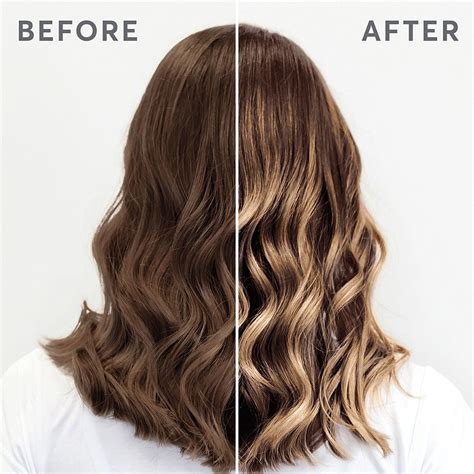Introduction

When it comes to hair coloring, two popular techniques stand out: highlights and balayage. Both methods aim to add dimension, texture, and brightness to your locks, but they differ significantly in their approach and results. In this comprehensive guide, we delve into the world of highlighting and balayage, exploring their unique features, benefits, and drawbacks to help you make an informed decision.
Chapter 1: Highlights
What Are Highlights?
Highlights are individual sections of hair that are lightened to create a contrasting effect against the base color. They can be applied in various sizes and patterns, from chunky streaks to subtle, natural-looking highlights.
Benefits of Highlights
- Adds depth and dimension: Highlights create a layered look by breaking up the monotony of a single-tone hair color.
- Enhances facial features: Strategic placement of highlights can highlight your eyes, cheekbones, and other facial assets.
- Covers grays: Highlights can effectively blend in gray hairs, providing a more youthful appearance.
- Easy to maintain: Touch-ups can be done every 6-8 weeks, making highlights a relatively low-maintenance option.
Drawbacks of Highlights
- Can be damaging: The chemical process involved in highlighting can weaken hair if not done properly.
- Can look unnatural: If overdone or applied incorrectly, highlights can create a harsh, striped effect.
- Can be expensive: Professional highlighting services can be costly, especially for thick or long hair.
Chapter 2: Balayage
What Is Balayage?
Balayage is a freehand hair painting technique where the colorist applies lightener directly to the hair, creating a gradual, sun-kissed effect. It aims to mimic the natural highlights that occur when hair is exposed to sunlight.
Benefits of Balayage
- Natural-looking: Balayage creates a soft, blended look that seamlessly blends with your base color.
- Low-maintenance: Touch-ups are typically needed every 12-14 weeks, making balayage a great option for busy individuals.
- Versatile: Balayage can be customized to suit any hair color and texture, from dark brunettes to blonde bombshells.
- Less damaging: The freehand application and minimal use of foils reduce the potential for hair damage.
Drawbacks of Balayage
- Time-consuming: Balayage can take several hours to complete, depending on the length and thickness of your hair.
- Can be expensive: The intricate and time-consuming nature of balayage can result in higher costs than highlights.
- May not fully cover grays: Balayage may not be as effective as highlights in concealing gray hairs.
Chapter 3: Highlight vs Balayage: Which Technique Is Right for You?
The choice between highlights and balayage ultimately depends on your individual preferences, hair type, and desired outcome.
- If you want a bold, contrasting look: Highlights may be the better option.
- If you prefer a natural, sun-kissed effect: Balayage is the ideal choice.
- If you have short hair: Balayage can be challenging to achieve on shorter hair lengths. Highlights may be more suitable.
- If you have dark hair: Highlights can create a more dramatic effect on dark hair. Balayage provides a more subtle, blended result.
- If you want to cover grays: Highlights may be more effective in concealing gray hairs, while balayage may require additional services.
- If you prefer low-maintenance: Balayage requires fewer touch-ups than highlights, making it a great option for busy individuals.
Chapter 4: Common Mistakes to Avoid
- Over-highlighting: Excessive highlighting can damage your hair and create an unnatural look.
- Using bleach on damaged hair: Applying bleach to already damaged hair can further weaken it, leading to breakage.
- Not using a professional: Attempting highlighting or balayage at home without proper training can result in uneven results and hair damage.
- Choosing the wrong color: Selecting a highlight or balayage color that is too far from your base color can look harsh and unnatural.
- Not conditioning your hair: Chemical hair treatments can strip your hair of moisture. Regular conditioning is crucial to maintain healthy, vibrant hair.
Conclusion
Highlighting and balayage are both effective techniques for adding depth, dimension, and brightness to your hair. While highlights offer a bold, contrasting look, balayage provides a natural, sun-kissed effect. Understanding the unique features and benefits of each method will empower you to make an informed choice that aligns with your hair goals. By avoiding common mistakes and seeking professional guidance, you can achieve a stunning hair transformation that complements your personal style and enhances your overall appearance.
